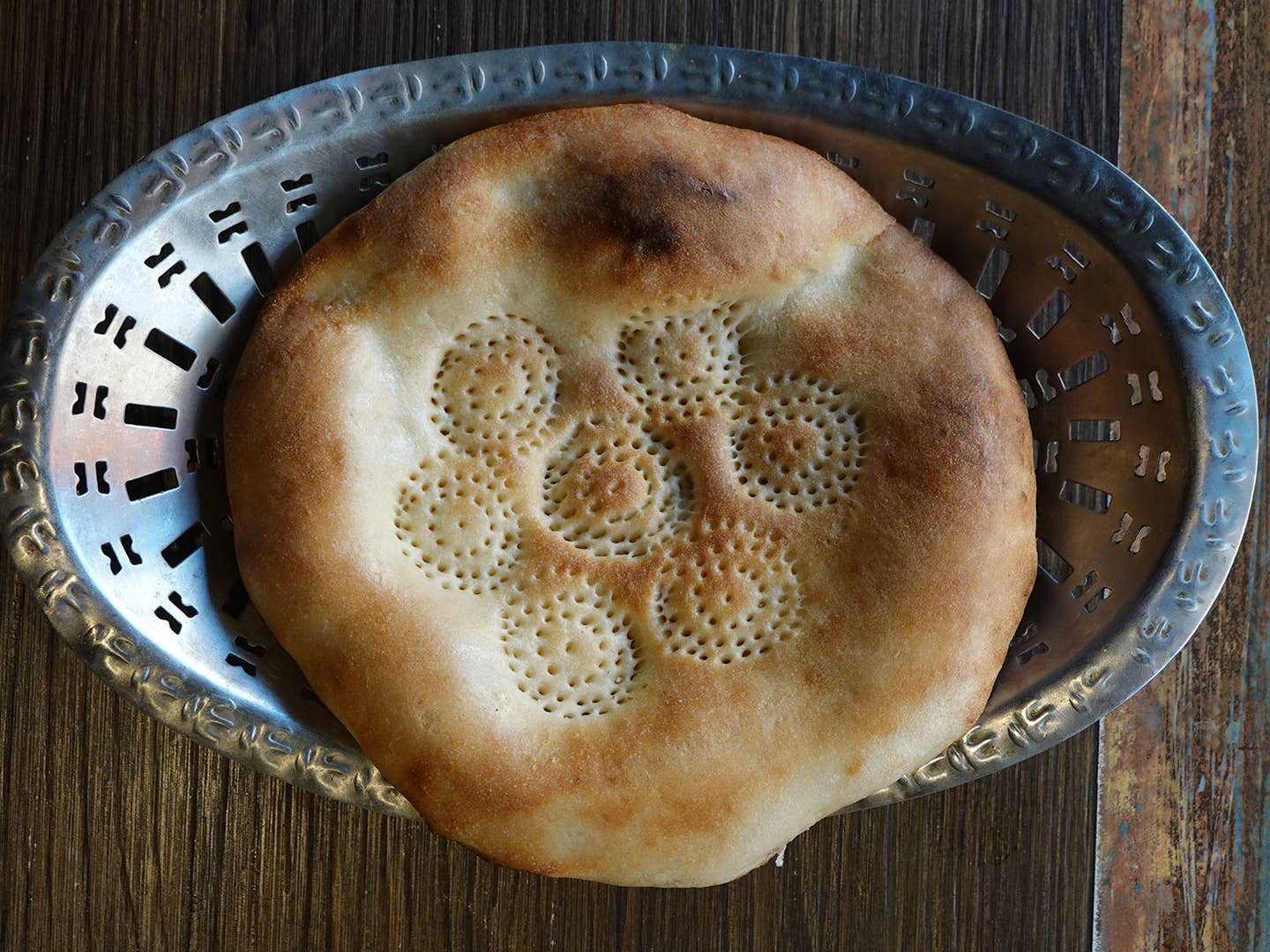
Tasting a City: The Afghan Naan of New Delhi
In India’s crowded capital, an enclave of Afghan bakers make their exquisite flatbreads out on the street
Sayed stretches the pliable dough with quick, practiced motions into a disk, then presses patterns into its surface with a pair of hair combs that have been taped together. With a curtain of bangs hanging in front of his eyes, he scoops up more dough and presses out another disk with his hands. And another. And another.
Beside him, a young man slides two dough disks onto a thick leather pad and quickly thwaps them against the inside wall of the cavernous, fiery tandoor, or clay oven. A few moments later, after a spritz of water, he pulls out the breads using a pair of long steel rods and sets them down in front of the shop atop a growing stack. A quiet, older man in Pashtun dress sells the round ones—simply known as “Uzbeki naan”—for 10 rupees (less than 15 U.S. cents) and larger diamond-shaped ones—referred to as “Afghani naan” or sometimes “snowshoe naan”—for 20 rupees. While most are plain and made with whole wheat flour, some have been sprinkled with tiny black nigella seeds. Unlike Indian naan, they are not brushed with butter. But all are soft, thick, and lightly fluffy, and the long ones have tapered ends and patterns or ripples in the surface. After completing his latest batch of naans, Sayed, who has been at it since the early morning, steps out for a cigarette.
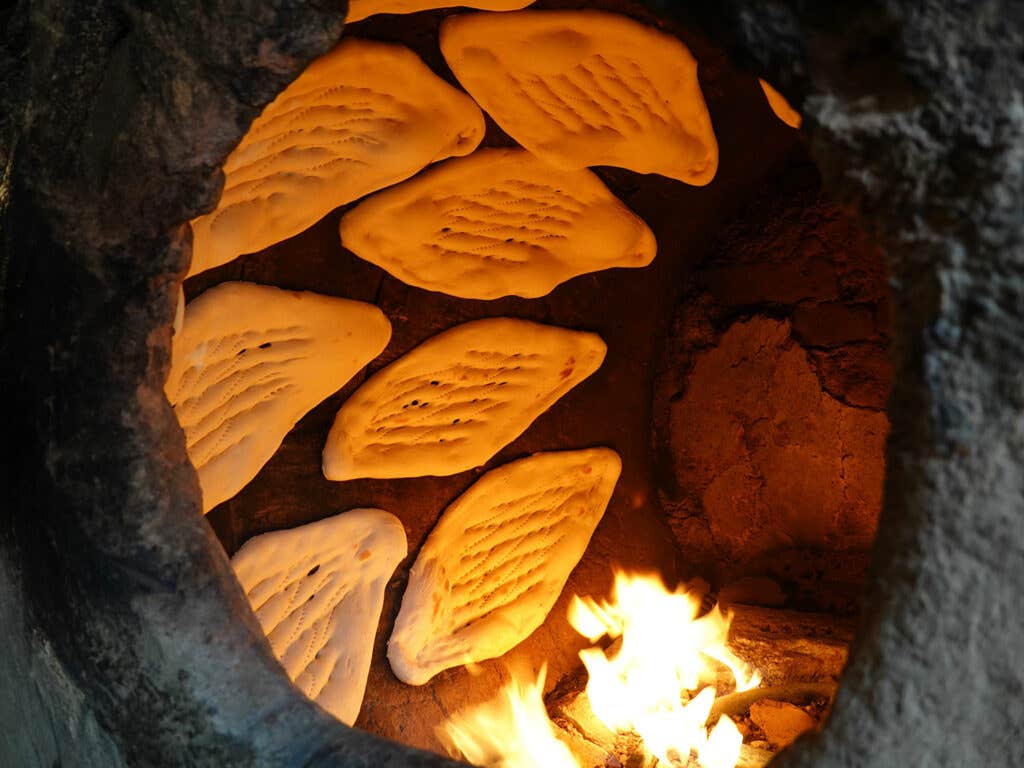
On this small lane in the Bhogal neighborhood of South Delhi, not far from Humayun's Tomb, there are a half dozen of these petite Afghan bakeries, cubbyhole places dominated by a gas-fired tandoor some five or six feet deep with a two-foot-wide round mouth. Like the other naanwais, or breadmakers, the tall, bearded Sayed is Afghan. As we talk, he scrolls through his phone to find an image of himself wearing a military uniform. In another, taken somewhere in the mountains, a heavily armed Sayed is in civilian clothes. "Afghanistan army," he says. "Special forces." At least until recently. The Taliban had threatened him, he explains, forcing him to flee his home last year.
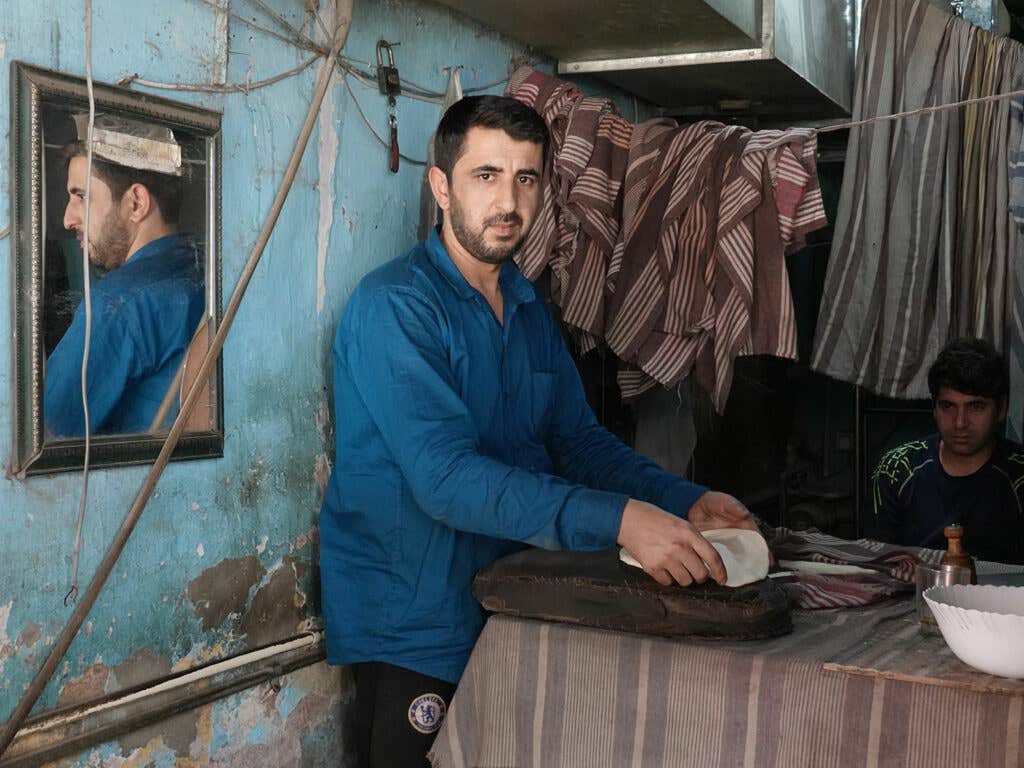
There are more than 13,000 Afghan refugees and asylum seekers registered with the United Nations High Commissioner for Refugees (UNHCR) in India. They have been settling here since the Soviets withdrew from Afghanistan in the late 1980s and the mujahedeen, and soon the Taliban, took power. They were mainly Sikhs and Hindus. After the Taliban fell in 2001, many stayed on in India. New refugees continue to arrive from Afghanistan. Afghans have settled in a couple of neighborhoods in South Delhi to rebuild their lives—and many have done so through food: working in restaurants, running shops, and, most tantalizingly, making flatbreads. For many young men like Sayed, Delhi is hopefully just a stop en route to resettling in Europe, Australia, Canada, or the U.S., where opportunities seem greater. But months can turn into years or even decades.
The heart of Afghan Delhi is in Lajpat Nagar, where many of the early Afghan refugees settled in the early 1990s. A couple of small roads are packed with travel agents, moneychangers, and pharmacies, and their signs in Dari—Afghanistan’s main language—have given the neighorhood the moniker Little Kabul. Where there are Afghans, they say, there is food. They have brought with them their home culture of flatbread baking.
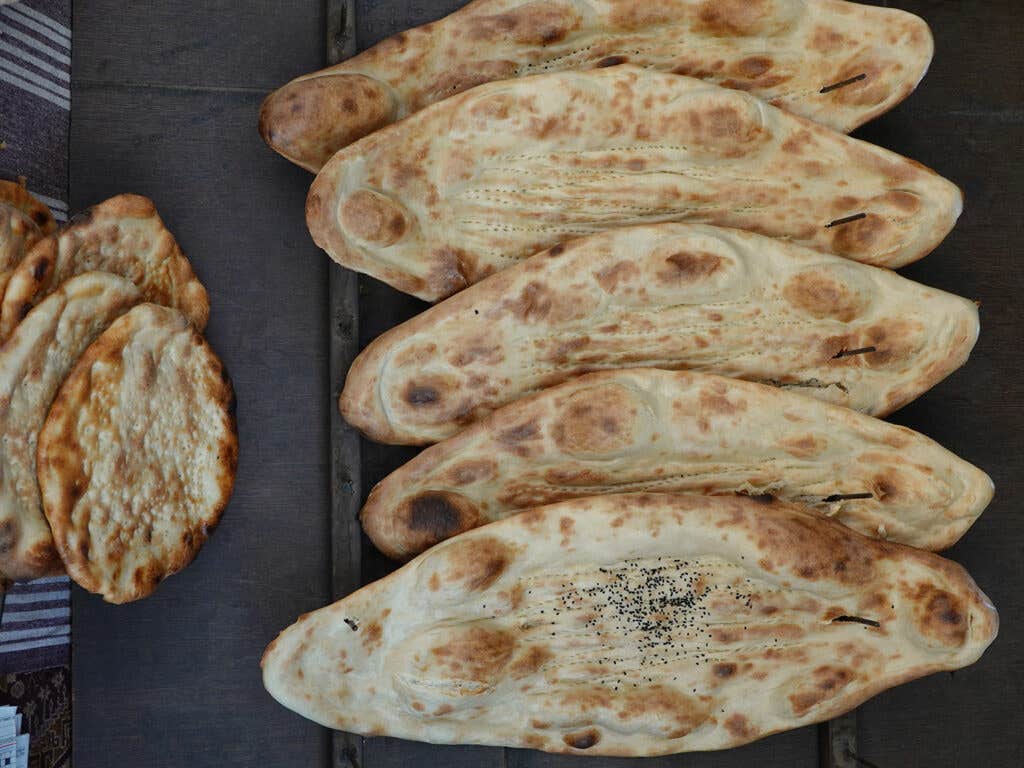
For Afghans, flatbread is a staple eaten with each meal. As it requires a tandoor, families typically do not bake their own naan at home. Instead, they buy fresh loaves for each meal. These spongy flatbreads, with their slightly crisper centers around the central stamped designs, are perfect for mopping up sauces and curries during savory meals, but are also simply eaten with honey and a cup of tea. On this sunny midday in Bhogal, a steady stream of customers are stopping to pick up armloads of bread that the Pashtun man wraps in newspaper. These include kids with backpacks on their way home from school.
Beside the nameless bakery where Sayed works is another, nearly identical one run by Ahmed, who has been in Delhi for seven years. As Ahmed’s two young daughters stop on their way home from school, it is clear he has become an established part of the community, and the breads part of the city’s culinary landscape.
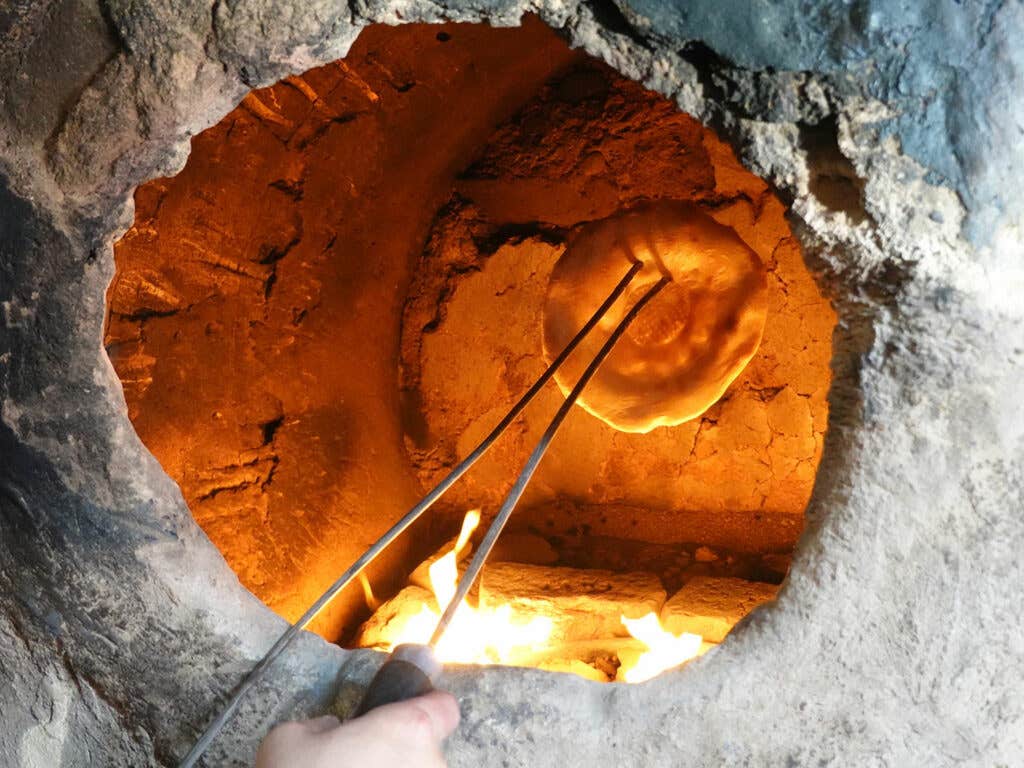
Here in Lajpat Nagar, numerous restaurants serve Afghan staples like plump mantu, steamed meat-filled dumplings topped with a garlicky yogurt sauce; massive trays of Kabuli pilau (or pulao) rice cooked with lamb, vegetables, nuts, and spices; and skewered kebabs. Among the popular snacks is fried potato- and leek-stuffed bolani flatbread, often eaten with tomato-chile chutney. Clientele are almost exclusively Afghan. In the popular Afghan Darbar Restaurant, many diners have small rolling suitcases or carryalls with them. These are medical tourists.
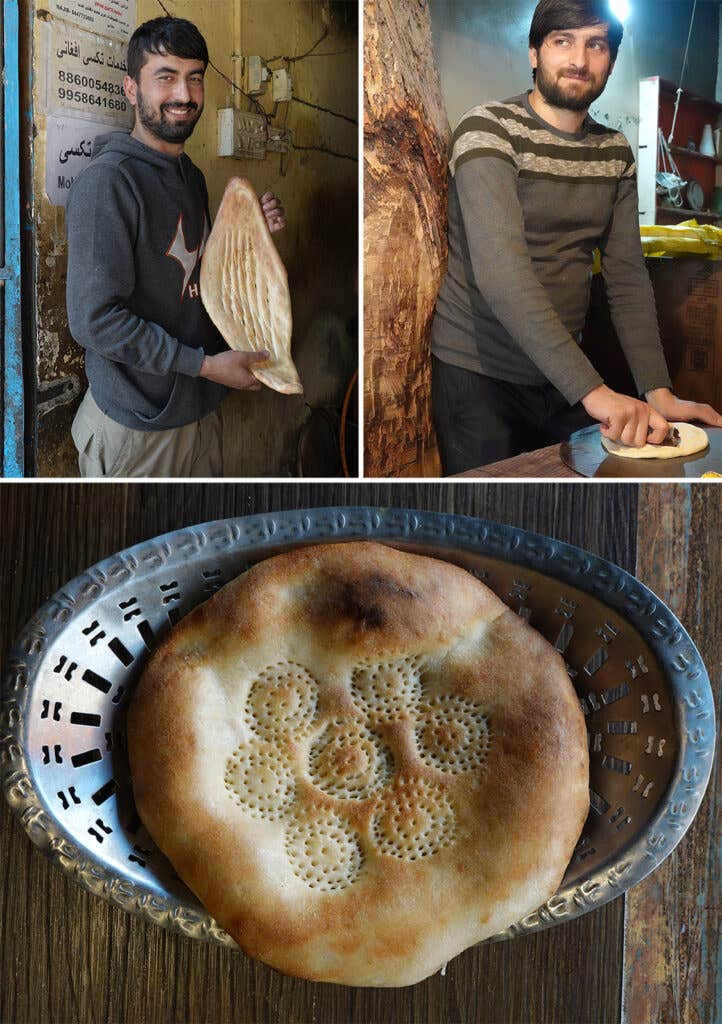
RIght: In the same neighborhood, an Afghan refugee presses designs into his round disk of dough using two combs.
Bottom: Many traditional Afghan naan come with patterns imprinted by the baker.
With the healthcare system in Afghanistan effectively destroyed from years of war, India has become an important destination for medical tourism. In 2005, India introduced special medical visas for patients as well as their accompanying “medical attendants.” Thousands of Afghans come each year to Delhi’s sophisticated and good-value private hospitals. Not all treatments are life-threatening. They come, too, to see ophthalmologists, dentists, psychiatrists, and even cosmetic surgeons. This has created a mini industry of Afghan services—including bakeries churning out hot naan—that cluster around certain private hospitals.
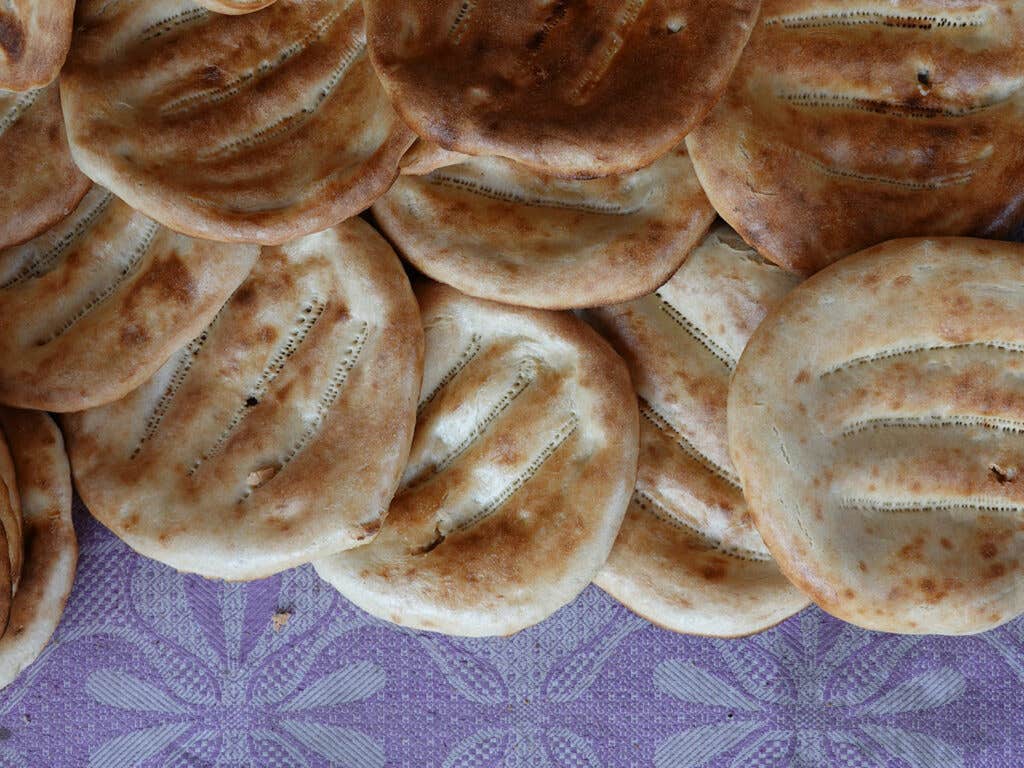
Whether in Delhi for the medical facilities or because they have been forced to flee their home, Afghans find comfort in the familiar food for sale in these enclaves. Perhaps nothing is more appreciated than the naan.
For naanwais like Ahmed and Sayed, bread has been a way to rebuild their lives. For them, the loaves give comfort, too.
*Some of the names have been changed.
Keep Reading
Continue to Next Story










